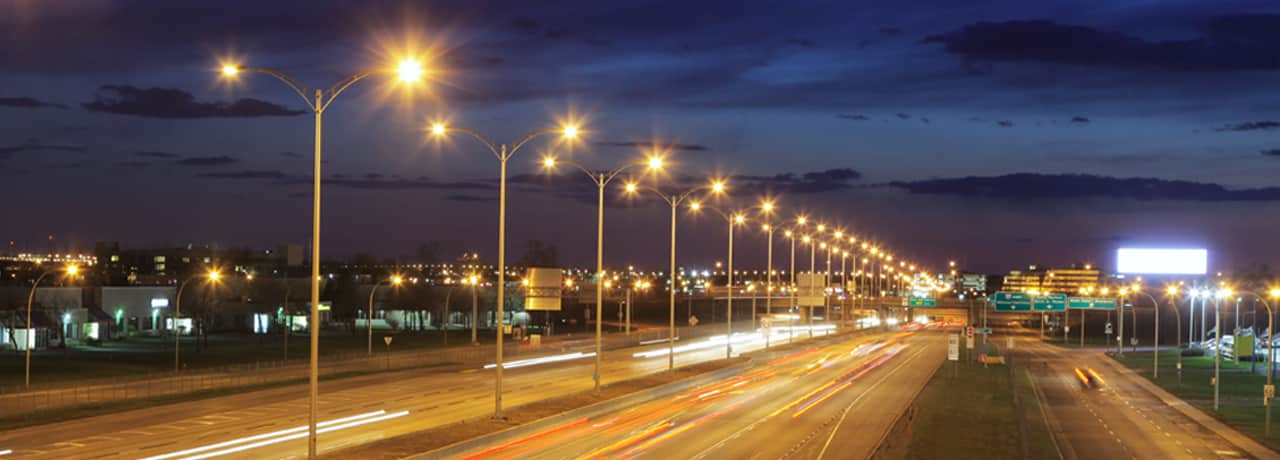January 4, 2018

Related Blogs:
Sign up for blog updates
Get innovation delivered to your inbox. Sign up for our blog and stay on top of the very latest from Semtech (formerly Sierra Wireless).
January 4, 2018

For one, it’s hard to see what’s in front of you. What’s worse, unless you’re wearing bright, reflective clothing, it’s even harder for drivers to see you. This can place walkers, joggers, bike riders, and even pets at risk of injury. Smart street lighting systems hold the power to eliminate this problem entirely. Cities that use these smart systems with advanced sensors and connectivity can customize their lights for virtually every situation, responding to weather conditions, emergency situations and malfunctioning street lights.
About 70 percent of all pedestrian accidents happen at night. One of the leading causes of these crashes is poor visibility; even headlights don’t always illuminate pedestrians on the road until it is far too late for the driver to maneuver around them.
While better street lighting can improve pedestrian visibility and reduce the number of car-vs-car accidents and pedestrian collisions, this isn’t the only safety concern. Incidents involving wildlife and pets are also common in both rural and urban areas. For example, more than 1 million deer get hit by cars every year, causing billions of dollars in damage. These accidents are not only financially costly, they can also cause significant injuries and even fatalities, both for the driver and the animal. A smart street lighting system can dramatically cut the number of collisions.
The most obvious way that smart street lighting improves safety on the road is through better visibility for drivers and pedestrians. Smart technology surpasses the current, unconnected lighting systems that are programmed to illuminate on a pre-set schedule and must be manually adjusted. What’s more, traditional lighting systems can only be switched “on” and “off,” whereas smart street lights use high-tech sensors to automatically adjust lighting levels in response to changing conditions. This ensures that sufficient light is provided precisely when it’s needed by drivers and pedestrians.
The modules that are connected to sensors, such as the wireless modules, can send information to a cloud platform via the cellular network. The sensors generate data on weather conditions, number of cars on the road, and movement detection. This information is sent to the cloud platform, which connects to the automated system that controls the street lights. The system will then dim or brighten the light based on the data received. For instance, if the sensor detects fog, the lights can dim to prevent light reflection and glare. For drivers and pedestrians, this means that streets will be lit according to the ideal setting for conditions in that area.
Similarly, movement detection sensors can determine when a pedestrian, pet, or wild animal walks near the road, brightening the lights to fully illuminate the action. This signals the creature’s presence to the driver, promoting greater awareness. Your street lights can also communicate with systems in other areas via the cloud; if one light detects movement, its neighboring lights will turn on in anticipation, even if their sensors don’t detect any movement yet.
By connecting your smart street lighting system and feeding sensor data to a cloud platform like AirVantage®, you also open the door to more efficient infrastructure management. For instance, a smart street lighting system could instantly detect when a light is damaged or burned out. Sensors send this information straight to the cloud; from there, the platform sends an alert to technicians to fix the problem as quickly as possible. Some cities already have hotlines that you can call to report a burnt-out street light, but even so, it can take hours before a technician is dispatched to fix the problem. With smart technology in place, local officials won’t need to rely upon citizens to report burnt-out lights and the issue can be addressed more quickly. Technicians can be instantaneously alerted by the cloud platform.
Beyond diagnosing its own technical problems, a smart street lighting system can be used to help emergency personnel pinpoint the location of an emergency more quickly. For example, if sensors detect significant smoke near the light from a nearby brush fire, an alert can be sent to the fire department. Ordinarily, this fire might not be detected by anyone for hours, allowing it to spread quickly. It’s also possible to equip street lights with other sensors, such as smart sensors that can detect a gas leak, gun shots or even an attack involving radiation or chemical warfare.
Street lights can also be used to send messages to drivers or emergency vehicles. When you control the lights from a cloud platform, you can manually flicker them on and off or change the LED’s colors in the event of an emergency. If a car accident occurs near one of the lights, the nearby lamps can be programmed to flicker off and on, alerting emergency vehicles to the exact location of the accident and signaling other drivers to slow down.
When combined, these factors—improved visibility, customized dimming, and emergency signals—make the roads safer for everyone. To understand how a smart street lighting system can work in your municipality or community, Start with Sierra today. The experts at Sierra Wireless can help you identify the right technology to connect your lighting sensors, giving you better control over the lighting conditions — and safety — in your community.
Get innovation delivered to your inbox. Sign up for our blog and stay on top of the very latest from Semtech (formerly Sierra Wireless).